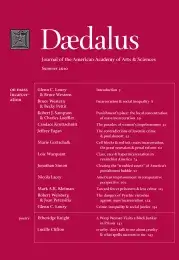Cell blocks & red ink: mass incarceration, the great recession & penal reform
The financial crisis, coupled with the election of Barack Obama, has raised expectations that the United States will begin to empty its jails and prisons because it can no longer afford to keep so many people behind bars. As Attorney General Eric Holder told the American Bar Association last summer, the country’s extraordinary incarceration rate is “unsustainable economically.”1
Some evidence suggests that economic hardship may force a major shift in penal policy that will reduce the country’s incarceration rate, which for years has been the highest in the world. Dozens of states cut their corrections budgets in 2009, and many proposed closing penal facilities to cover gaping budget gaps. States have enacted a slew of penal reforms aimed at shrinking their prison populations. Last year the total state-prison population dipped for the first time since 1972.2
The sentiment that the “war on drugs” may have lost its momentum is widespread. Congress and the Obama administration have been seriously considering measures to reduce the sentencing disparity between crack and powder cocaine and to soften other drug laws. Several states and municipalities have designated enforcement of marijuana laws their lowest priority, and a number of states are debating marijuana decriminalization. Last fall, Minneapolis became the first major U.S. city without a narcotics squad when it disbanded its special drug unit to help close a massive budget deficit. The U.S. Sentencing Commission, the panel that sets guidelines for the federal courts, has begun to investigate alternatives to incarceration, and last October, Congress ordered the Commission to review mandatory minimum sentencing.
The current economic distress certainly provides an opportunity to rethink the direction of U.S. penal policies. But we should not assume that the crushing economic burden will unhinge the carceral state. While the prison population edged downward in twenty-seven states between 2008 and 2009, it continued to grow in twenty-three others. Meanwhile, the federal prison population increased nearly 7 percent.
Mounting fiscal pressures on their own will not spur communities, states, and the federal government to empty jails and prisons. The race to incarcerate began in the 1970s, at a time when states faced dire financial straits. It persisted over the next thirty years despite wide fluctuations in the crime rate, public opinion, and the economy. The 2001 . . .
